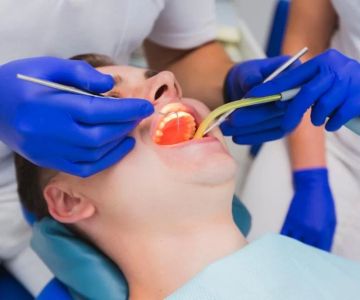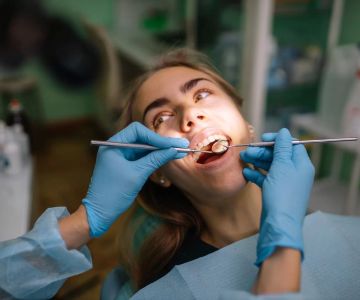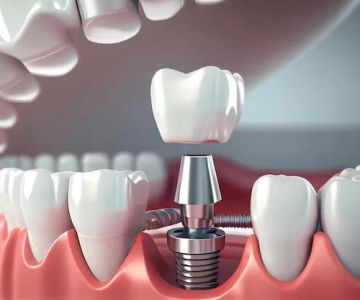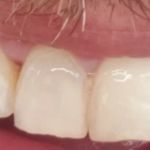What Happens During a Dental Cleaning? A Detailed Guide to Professional Teeth Cleaning
- What is a Dental Cleaning?
- Steps of a Professional Dental Cleaning
- Why is Dental Cleaning Important?
- How Often Should You Get a Dental Cleaning?
- Tips for Maintaining Your Teeth After a Cleaning
- Conclusion
1. What is a Dental Cleaning?
A dental cleaning is a professional procedure performed by a dentist or dental hygienist to remove plaque, tartar, and stains from your teeth. Regular dental cleanings are a vital part of maintaining your oral hygiene and preventing dental issues like cavities, gum disease, and bad breath. During the procedure, your dentist will thoroughly clean your teeth to remove build-up that brushing alone cannot handle.
2. Steps of a Professional Dental Cleaning
The process of a professional dental cleaning is broken down into several essential steps:
2.1. Examination of the Mouth
The dental hygienist starts by examining your teeth and gums to check for signs of any oral health issues. A visual inspection is typically followed by X-rays if necessary, to check for cavities or gum disease.
2.2. Removal of Plaque and Tartar
Using special tools, the hygienist removes plaque and tartar build-up from the surfaces of your teeth. This is a crucial step because plaque can harden into tartar, which can only be removed by a professional cleaning. The hygienist may use a scaler or ultrasonic cleaner for this process.
2.3. Tooth Polishing
Once your teeth are free from plaque and tartar, your dentist or hygienist will polish them using a gritty toothpaste. This step helps to remove surface stains and smooths out your teeth, making it harder for plaque to accumulate.
2.4. Flossing
After polishing, flossing is done to remove any remaining debris between your teeth, ensuring that every crevice is clean.
2.5. Rinsing and Fluoride Treatment
Finally, you'll rinse your mouth with a special solution that removes any leftover cleaning particles. Many dental offices also offer a fluoride treatment to help strengthen your teeth and protect them from cavities.
3. Why is Dental Cleaning Important?
Regular dental cleanings are essential for maintaining overall oral health. Not only do they help in removing harmful plaque and tartar, but they also reduce the risk of gum disease, tooth decay, and other dental problems. A cleaning session can also help identify early signs of issues that could otherwise go unnoticed until they become more severe. For instance, gingivitis, the early stage of gum disease, can often be detected during a routine cleaning.
Furthermore, a clean mouth leads to fresher breath and a brighter smile. Maintaining good oral hygiene habits between cleanings, like brushing and flossing regularly, ensures that your teeth stay healthy for the long term.
4. How Often Should You Get a Dental Cleaning?
Most people should visit their dentist for a professional cleaning at least twice a year. However, some individuals with certain health conditions or a higher risk for dental problems may need more frequent cleanings. Your dentist can advise you on the ideal cleaning schedule based on your unique oral health needs.
If you're unsure about your needs, it’s always a good idea to consult your dentist to determine how often you should schedule a cleaning. They can provide personalized advice based on your oral health history.
5. Tips for Maintaining Your Teeth After a Cleaning
After your cleaning, it's essential to maintain good oral hygiene habits. Here are a few tips:
- Brush your teeth at least twice a day with fluoride toothpaste.
- Floss daily to remove plaque and food particles between your teeth.
- Limit sugary snacks and drinks to reduce the risk of cavities.
- Visit your dentist regularly for check-ups and cleanings.
- Consider using a mouthwash to help reduce bacteria and freshen your breath.
6. Conclusion
Dental cleanings are an essential part of maintaining optimal oral health. They not only remove harmful plaque and tartar but also help to prevent gum disease, cavities, and other dental problems. By visiting your dentist regularly and maintaining good oral hygiene at home, you can ensure your teeth remain healthy and bright.
If you're due for a dental cleaning or want to learn more about how to maintain your oral health, visit Dentistry Toothtruth for expert advice and dental care services.







 Maui Whitening Orlando4.0 (32 review)
Maui Whitening Orlando4.0 (32 review) Bloomington Southside Dental Care3.0 (26 review)
Bloomington Southside Dental Care3.0 (26 review) Christiana Dental Center4.0 (650 review)
Christiana Dental Center4.0 (650 review) Carolina Dental Arts - New Bern Ave4.0 (152 review)
Carolina Dental Arts - New Bern Ave4.0 (152 review) Equitas Health Short North Medical Center3.0 (96 review)
Equitas Health Short North Medical Center3.0 (96 review) Prosthodontics of Madison - Kendra Schaefer, DMD & Christine Roenitz, DMD4.0 (25 review)
Prosthodontics of Madison - Kendra Schaefer, DMD & Christine Roenitz, DMD4.0 (25 review) The Importance of Oral Health Education During Pregnancy for a Healthy Pregnancy
The Importance of Oral Health Education During Pregnancy for a Healthy Pregnancy Best Tips for Brushing Your Teeth Properly for Healthy Gums: Essential Techniques for Oral Health
Best Tips for Brushing Your Teeth Properly for Healthy Gums: Essential Techniques for Oral Health Why Skipping Dental Checkups Can Lead to Bigger Oral Health Problems
Why Skipping Dental Checkups Can Lead to Bigger Oral Health Problems Advantages of Porcelain Dental Restorations
Advantages of Porcelain Dental Restorations How Can Diabetes Cause Tooth and Gum Problems? Preventing and Managing Oral Health Issues
How Can Diabetes Cause Tooth and Gum Problems? Preventing and Managing Oral Health Issues Healthy Habits for Promoting Good Oral Health and Hygiene: Tips for a Healthy Smile
Healthy Habits for Promoting Good Oral Health and Hygiene: Tips for a Healthy Smile